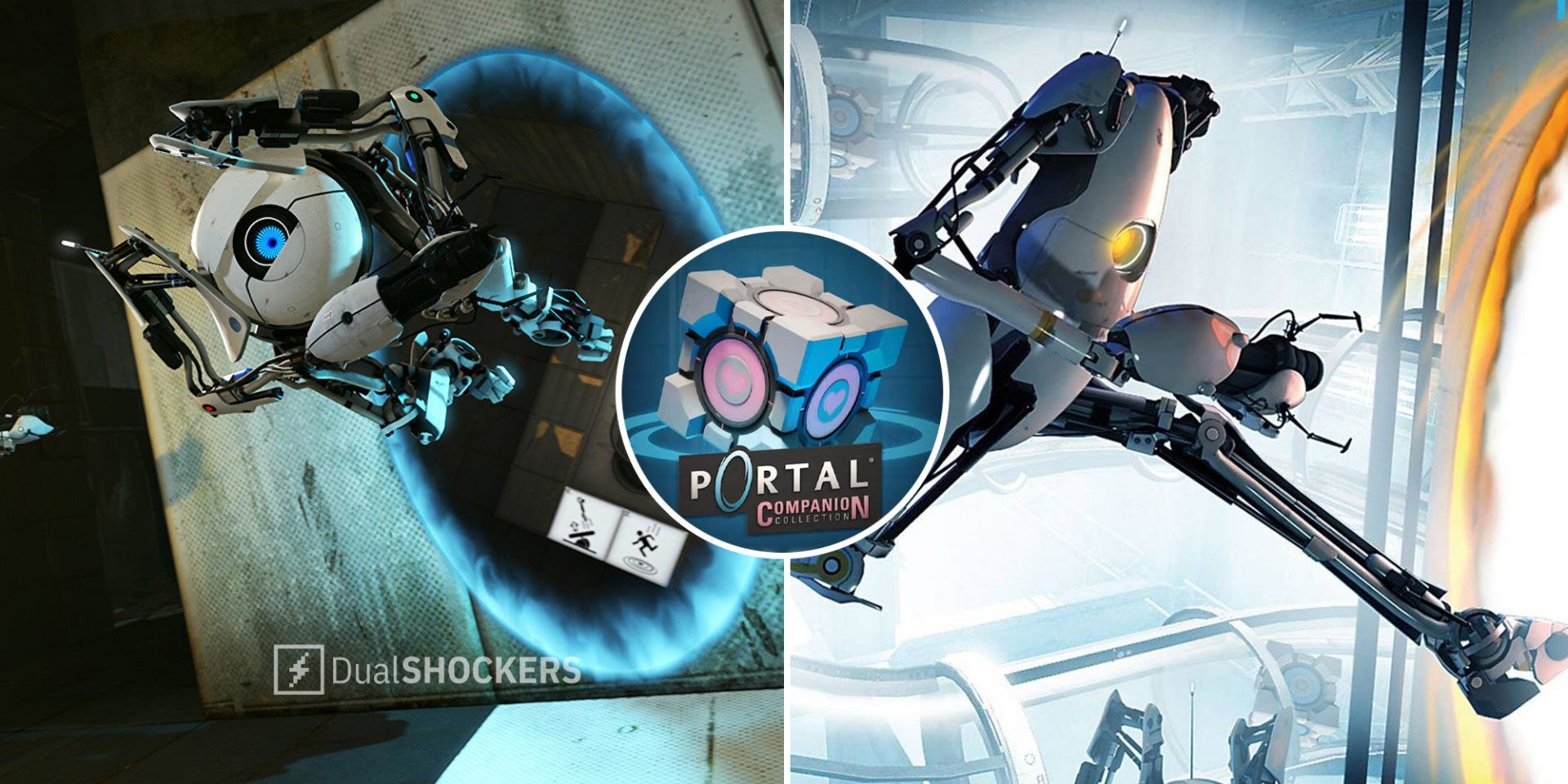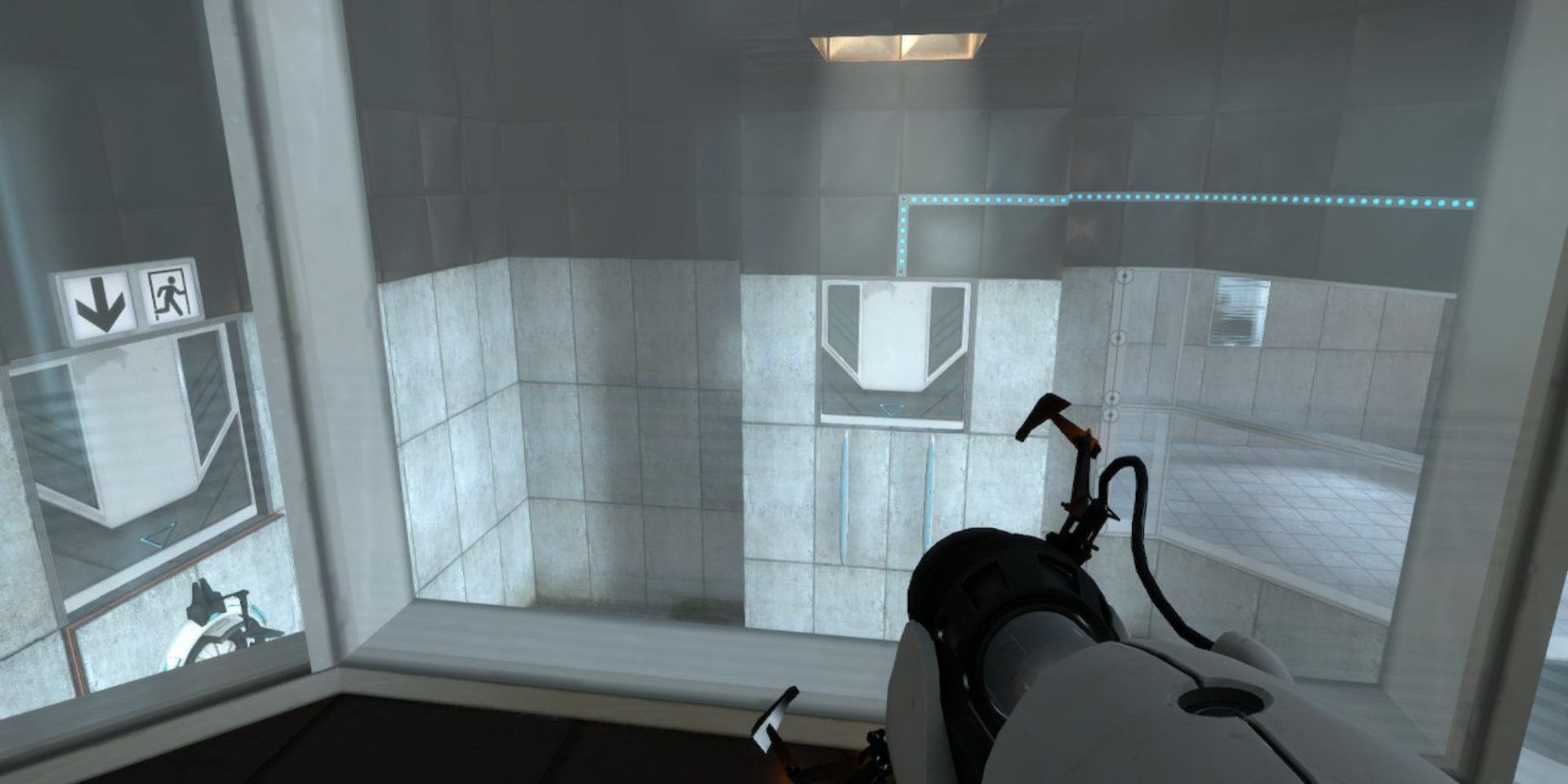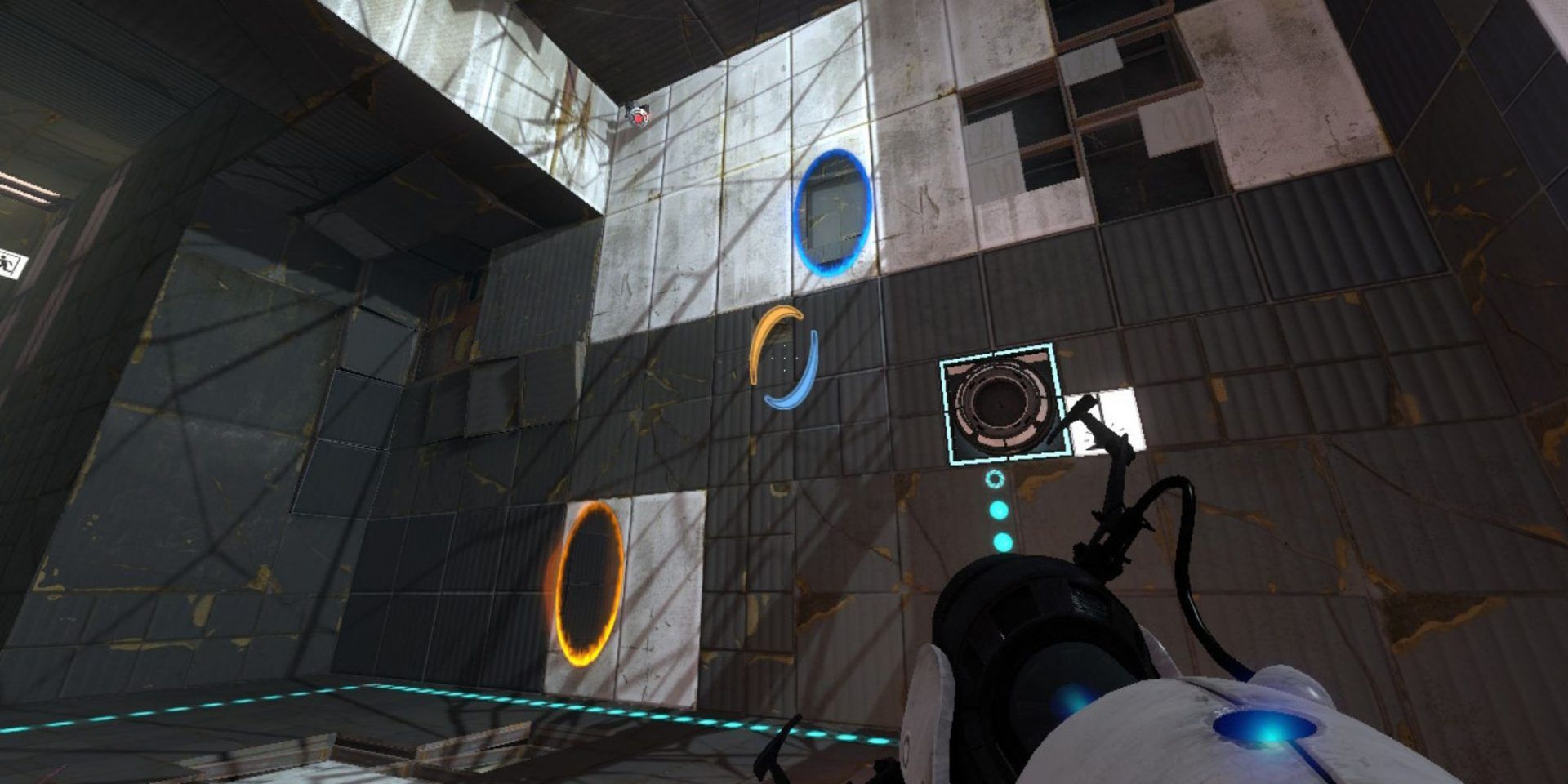|
Our Score: 9/10 - Excellent |
|
The Good: Smooth gameplay, memorable characters, lots of different modes, great price |
|
The Bad: Can be nauseating to play at times, reload issue with the first game, gimmicky motion controls |
|
Release Date: 28 June 2022 |
|
Developed By: Valve Corporation, NVIDIA Lightspeed Studios |
|
Available On: Nintendo Switch |
|
Reviewed On: Nintendo Switch |
I wake up in a room that is unfamiliar to me and begin to walk around it. Suddenly a portal opens up, and I walk through it, all while a robotic voice guides me along the way. It tells me to pick up a massive cube and place it on a red pad. From there I am launching myself across rooms, and traveling through portals at breakneck speeds. This is not an unfamiliar experience, but perhaps what's most impressive is that playing it now on the small screen of the Switch 15 years on from its original release, it still feels incredible.
Portal: Companion Collection bundles together Valve's two iconic first-person puzzlers, Portal and Portal 2. In both games, you play the silent protagonist known as Chell. Both games see you shooting portals, placing blocks on pressure pads, and moving turrets around Aperture Science Laboratories. In the first game, you are handed the famed handheld portal device and make your way through 19 test chambers, put together by the series' antagonist GLaDOS.
As you progress through each chamber, the tests become more and more difficult, as newer obstacles are introduced. You go from simply placing a block on a red switch, to using the portals to access higher areas and more. While I did find the first game's puzzles to be pretty charming due to some of the things placed in them like shooting a portal to expose a laser belt of moving platforms and shooting portals to redirect small - but deadly - balls of energy to containers to move certain platforms, the game's over-reliance on ever-accelerating and ever-increasing amounts of portals were a bit dizzying and fiddly on the small Switch screen.
Portal 2 still has some of those types of puzzles, but there were noticeably fewer of them because the game introduces gels that allow you to slide, bounce, and stick to walls and are not as headache-inducing. You also get to shoot a portal at the moon in the second game, which remains one of the delightfully creative moments in gaming - that moment of 'they don't expect me to... shoot the moon, do they?', before you go ahead and do it is one of the many times to treasure in the game.
The controls are pretty simple and some commands like jumping, ducking, and picking up and using objects in Portal 1 can be used by pressing a couple of different buttons - though they do not have to be pressed at the same time. If you do not want to use the standard button layouts, no problem, as it's fully customizable. They also utilize a motion-aiming feature that uses the Switch's motion controls. The controls are more of a gimmick than something I can recommend using, as they got in the way of progress more than they helped. Using the controller, portals went exactly where I wanted them, when I used the motion controls I felt like someone desperately searching for cell phone coverage.
Loading times do not take long either, varying anywhere from two to five seconds max.
The animations of the turrets come off as both cute and threatening. They're cute when making their robotic chirps, but when their sides open up to get the guns out, it's time to duck and cover. The animation sequences in Portal 2 when pieces of various testing centers are shifting and slotting into place are smooth and offer a nice but also terrifying feeling of restoration - this is not a place you want to be restored because its restoration can mean your destruction.
The journey through the laboratory's more dilapidated parts later in the game is still a thing to behold. Going through early testing areas, you see the arms attached to broken wall panels pull them back into place, and when you fall down into an area that is covered in old rusty pipes and broken walls following an altercation with the game's surprise boss, it looks like a boiler room after a major explosion.
While Portal was released in 2007, it has aged very well, and when you fire up Portal 2, you can tell that Valve made a huge technical jump with it. Areas look more detailed, the portal gun has some nice scuff marks giving it a nice sense of wear and tear over the years.
Portal 2 offers a two-player co-op campaign, where you play as silent protagonists ATLAS and P-body. The co-op in Portal 2 is one of the best co-op experiences in gaming. There are new and different challenges, GLaDOS uses a different script when talking to them - early on she makes a joke that humans unlike robots need to be taught teamwork, which serves as a great motivator to make you and the person you're playing with work together. You can play locally with a friend via split-screen, or if nobody is nearby you can jump into the game's online servers and play with others around the world.
The collection also contains a commentary mode that lets you play the entire game with an audio commentary from the development team, and even takes control of the game at certain points to show you things. It's a neat feature, making the games feel like playable museums. You see a word balloon, you aim over it and press the action button and you're given the history of why certain functions in the games were included and their overall development history. The only downfall is that progress cannot be saved in this mode.
There are also watchable extras including an introduction to ATLAS and P-body, as well as some well-animated promo videos for Aperture narrated by J.K. Simmons. This might be one of the best collections available right now and it's a steal for $19.99. Both games neither look nor feel outdated, their controls are really tight, not to mention their stories which are filled with wit, legendary dialogue, and a fair share of dark humor. Each robot in this game has a different personality and they show it very well - who knew turrets were killing machines with feelings?



